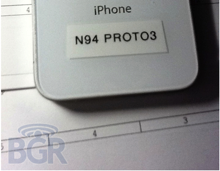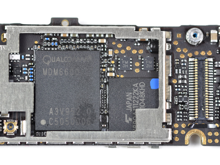
Jeffries analyst Peter Misek has put out a note about the iPhone model being released later this year, reports Business Insider. He claims that it will be called the iPhone 4S, features Apple’s dual-core A5 chip and will be compatible with Sprint, T-Mobile as well as Verizon and AT&T.
As with all of these rumors from analysts, it is hard to say whether they’re based on fact or actual real-world evidence.
The inclusion of Apple’s A5 processor in a new iPhone is a given at this point. The chip currently powers Apple’s iPad 2 and has already been seen in the current iPhone 4 chassis in a 
The inclusion of HSPA+ is also very likely as most of the current generation of “4G” phones are sporting this protocol. HSPA+ is in fact, not 4G at all. Instead it’s a newer, albeit faster 3G protocol, but the marketing departments of most of the major phone manufacturers have decided that it’s fast enough for them to sell as 4G. The lack of maturity of true 4G chips is stated by Misek as the reason that Apple will go with HSPA+ instead.
4G chips are indeed relatively new and power hungry. Many true 4G devices like the Droid Charge, one of the current crop of LTE devices, have relatively short battery life in comparison to 3G devices. Apple has made a large effort to focus on getting the best battery life possible out of the iPhone, as evidenced by the long segments on battery performance during keynotes. This focus could lead them to put off 4G until it is more mature and less battery intensive.
As far as the worldphone rumor goes, it definitely makes sense from a manufacturing perspective. Apple would no doubt like to produce one phone that works with all of the major carriers world wide. It would cut down on production cost, limit the amount of SKUs that they would have to stock and give customers more carrier flexibility, which would spur sales. This also comes down to chipset maturity however. 
In their teardown of the Verizon iPhone 4, iFixit discovered that it was using a Qualcom MDM6600 chip which is capable of communicating with GSM/HSPA+ networks like T-Mobile and AT&T as well as CDMA networks like Verizon and Sprint. The GSM portion of the chip is not being used on the Verizon model of course, but it would be a matter of programming to make it compatible with either standard.
But then there’s the name. We’re unlikely to see a new iPhone next month, as we have been accustomed to for the last several years. Instead, it should arrive late this year, in time for the holiday season. The change in release schedule could very well be an effort by Apple to ensure that the next iPhone maintains a significant industry advantage in technology and software.
Remember that most other manufacturers have only just begun to release devices with similar or better specifications to the iPhone. Especially in categories like screen resolution and battery life.
With this delay, it makes less sense to us than ever that the next iPhone would be called the ‘iPhone 4S’. The iPhone 3GS was an anomaly, a side-step from Apple’s normal release schedule. The speed bump was necessary in order to make sure that the user experience of the phone kept up with the rapidly expanding capabilities of the apps on the App Store.
An iPhone 4S moniker makes little sense for this next iPhone, especially if the later release date means that Apple is given more time to bring their next offering right back to the top of the hardware scale.
Get the TNW newsletter
Get the most important tech news in your inbox each week.




